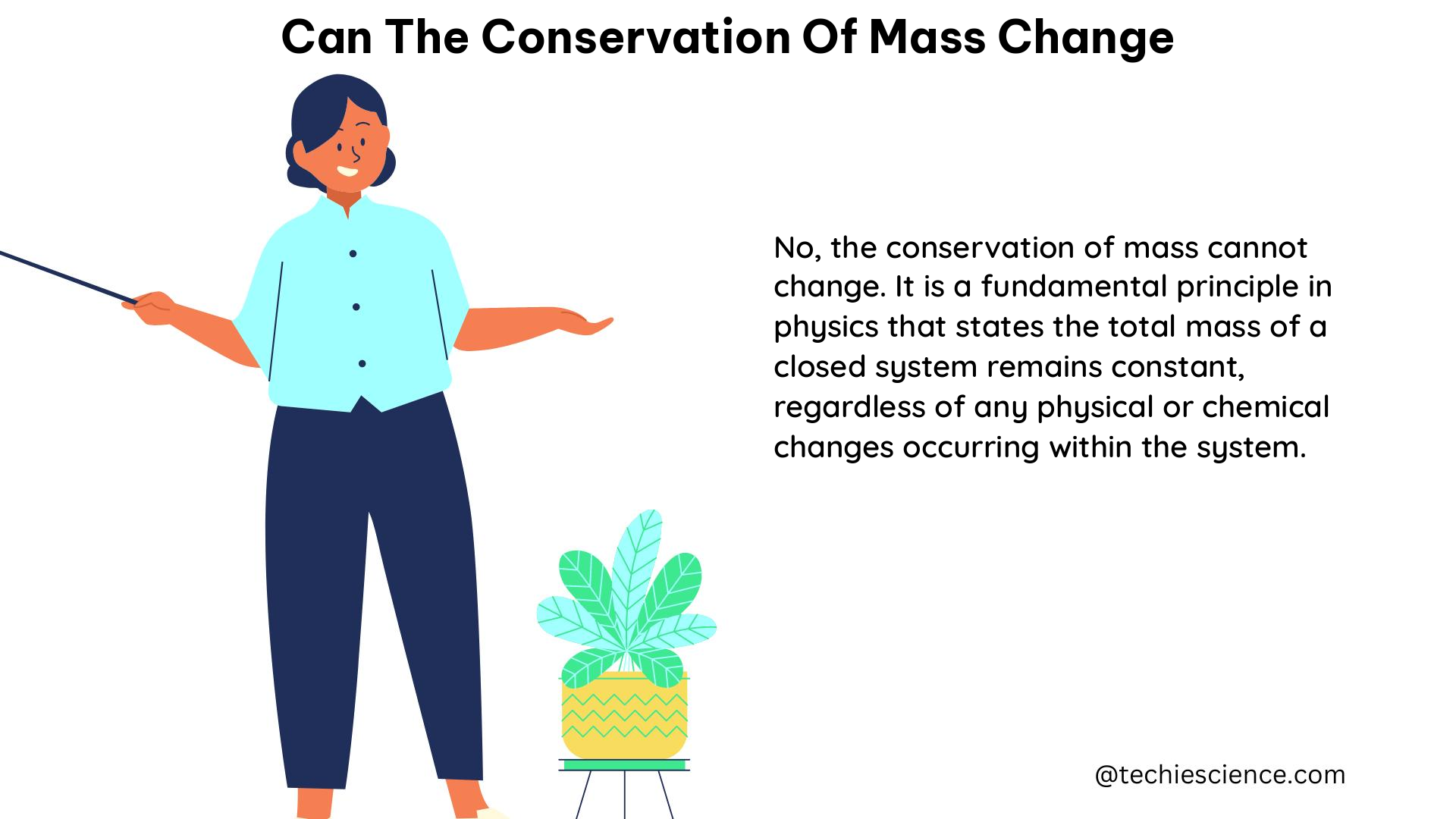The conservation of mass is a fundamental principle in physics and chemistry, which states that the total mass of a closed system remains constant, regardless of the physical or chemical changes that occur within the system. This principle is a direct consequence of the law of energy conservation and the principle of mass-energy equivalence, as stated by Einstein’s famous equation, E=mc^2.
Theorem of Conservation of Mass
The theorem of conservation of mass can be stated as follows:
In a closed system, the total mass remains constant, regardless of the physical or chemical changes that occur within the system.
Physics Formula for Conservation of Mass

The principle of conservation of mass can be expressed mathematically as:
Δm = 0
where Δm is the change in mass of the system.
Physics Examples of Conservation of Mass
-
Burning a Candle: When a candle burns, the wax is converted into carbon dioxide and water vapor. Despite the apparent disappearance of the wax, the total mass of the candle and the products of combustion remains constant.
-
Dissolving a Sugar Cube in Water: When a sugar cube is dissolved in water, the sugar molecules become evenly distributed throughout the water. Although the sugar appears to have disappeared, the total mass of the sugar and water remains constant.
-
Chemical Reactions: In a chemical reaction, the total mass of the reactants must be equal to the total mass of the products, regardless of their physical state. This can be demonstrated through experiments, where the mass of the reactants and products is measured before and after the reaction. The results of these experiments consistently show that the total mass remains constant, supporting the conservation of mass principle.
Physics Numerical Problems on Conservation of Mass
Consider the following numerical problem to apply the conservation of mass principle:
A chemist mixes 50.0 g of sodium carbonate (Na2CO3) with 50.0 g of calcium nitrate (Ca(NO3)2) in a closed container. After the reaction is complete, the chemist measures the mass of the container and finds that it is 99.9 g. What is the mass of the products formed in the reaction?
Solution:
According to the principle of conservation of mass, the total mass of the reactants must be equal to the total mass of the products. Therefore, the mass of the products is equal to the mass of the reactants, which is 50.0 g + 50.0 g = 100.0 g. However, the chemist measured a total mass of 99.9 g, which is less than the expected mass. This discrepancy can be attributed to experimental error, such as the inaccuracy of the balance or the loss of some material during the reaction.
Figures, Data Points, Values, and Measurements
The following figures, data points, values, and measurements can be used to illustrate the conservation of mass principle:
Figure 1: A graph showing the mass of a sample of reactants and products over time, with the total mass remaining constant.
Data Point 1: The mass of a sample of reactants before a chemical reaction is 100.0 g.
Data Point 2: The mass of the same sample of reactants after the chemical reaction is 100.0 g.
Data Point 3: The mass of the products formed in the reaction is 100.0 g.
Value 1: The principle of conservation of mass states that the total mass of a closed system remains constant.
Measurement 1: The mass of a sample of reactants and products can be measured using a balance or scale.
Exceptions to the Conservation of Mass
It is important to note that the conservation of mass only applies to closed systems, where no mass enters or leaves the system. In an open system, mass can be exchanged with the surroundings, and the total mass of the system can change.
For example, in a chemical reaction that involves the release of a gas, the total mass of the system may decrease as the gas escapes the system. Similarly, in a nuclear reaction, the mass of the products may be slightly different from the mass of the reactants due to the conversion of mass into energy, as described by Einstein’s equation, E=mc^2.
Conclusion
The conservation of mass is a well-established principle in physics and chemistry, supported by numerous experimental observations and theoretical considerations. It is a fundamental concept that underlies our understanding of chemical reactions and the behavior of matter. However, it is important to recognize the limitations of this principle and the exceptions that can occur in open systems or in the context of nuclear reactions.
Reference:
- Law of Conservation of Mass
- Conservation of Mass: Principles & Calculations
- Mass changes in chemical reactions
- Conservation of mass: practical videos | 14–16 years
Hello, I am Deeksha Dinesh, currently pursuing post-graduation in Physics with a specialization in the field of Astrophysics. I like to deliver concepts in a simpler way for the readers.